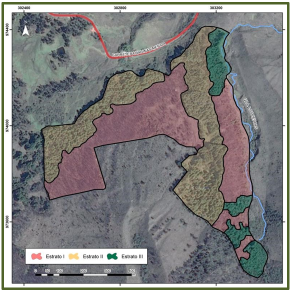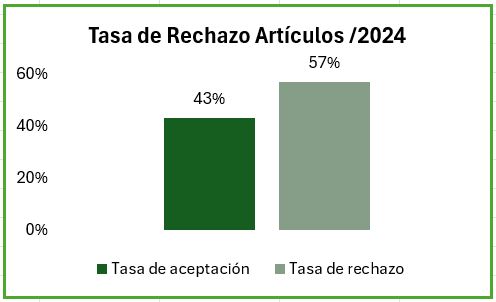Post-Fire evaluation of Pinus radiata plantation, la Corcovada sector, Mérida, Venezuela
DOI:
https://doi.org/10.54753/blc.v15i2.2465Keywords:
Forest plantations, fire, conservation, Pinus radiata, systematic samplingAbstract
Forest plantations in Venezuela began in the state of Mérida for protective and ornamental purposes. Given the initial success of these plantations, similar experiences were repeated elsewhere in the country. In the Mucubají Experimental Station (E.E. Mucubají), the introduction of conifers was promoted through at Universidad de Los Andes-CORPOANDES project in 1965. The main objectives of this project were to conserve the watershed and its ecosystems, conduct research on the behavior of exotic-introduced species, protect soils from erosion, and conserve watersheds. The general objective of this research was to evaluate the general state of the post-fire stand, within the Pinus radiata D. Don plantation in the La Corcovada sector of Mérida, Venezuela. Systematic sampling was carried out using circular plots of 400 m2 (r = 11,28 m), randomly locating the first plot, followed by subsequent plots every 80 m between plots and every 100 m between transects until the entire affected area was covered. The sampling intensity was 5 % for a total of 40 plots. The majority of trees, 67.69 %, were affected by the fire but in good condition. This represented a total affected volume of 669.826 m3 above bark and 506.480 m3 below bark.References
Albarrán, V. y Zerpa, F. (1992). Modelos matemáticos ara generar tablas de volumen y peso verde en plantaciones de Pinus caribaea var. hondurensis del oriente venezolano. Boletín Técnico # 5. C.V.G. PROFORCA, Edo. Monagas.
Del Olmo, P. (2024). Los incendios forestales de Asturias en marzo-abril de 2023: evaluación preliminar y análisis de su severidad. Universidad de Cantabria. Tesis de Grado. https://repositorio.unican.es/xmlui/handle/10902/33887
Guamán, F. (2024). Caracterización del crecimiento dasométrico de una plantación de Pinus radiata D. Don con fines de manejo silvicultural en la parroquia San juan, provincia de Chimborazo, Ecuador. Escuela Superior Politécnica del Chimborazo. Tesis de grado. http://dspace.espoch.edu.ec/bitstream/123456789/22320/1/33T0493.pdf.
Gómez, M. y Delgado, H. (1989). Diagnostico preliminar de la plantación de coníferas de la “Estación Experimental Mucubají”. Escuela Técnica Superior Forestal. Universidad de Los Andes, Mérida, Venezuela.
Köppen, W. (1948). Climatología: Con un estudio de los climas de la Tierra. México: Fondo de Cultura Económica.
Moncayo, X. (2021). Caracterización dasométrica de dos plantaciones de Pinus radiata D. Don, con fines de manejo en la parroquia San Andrés, cantón Guano. Escuela Superior Politécnica del Chimborazo. Tesis de grado. http://dspace.espoch.edu.ec/handle/123456789/15888.
Monasterio, M. (1980). Estudios Ecológicos en los Páramos Andinos. Ediciones de La Universidad de los Andes. Mérida, Venezuela.
Pérez, L. (2024). Caracterización del crecimiento dasométrico de una plantación de Pinus radiata D. Don con fines de manejo silvicultural en la parroquia Sicalpa, provincia de Chimborazo. Escuela Superior Politécnica del Chimborazo. Tesis de Grado. https://dspace.espoch.edu.ec:8080/server/api/core/bitstreams/d6f77b46-6595-459f-8c75-30c21135e067/content.
Pinilla, J., Navarrete, M., García, J., Navarrete, F., Luengo, K. (2023). Evaluación de método de manejo de la regeneración natural de Pinus radiata para restablecer rodales productivos post incendios forestales. Ciencia & Investigación Forestal; 29(1): 33-44. https://doi.org/10.52904/0718-4646.2023.582
Rangel, Y. (2017). Composición florística de plantas vasculares de los herbazales-frailejones post-fuego en la estación experimental Mucubaji, Mérida-Venezuela. Repositorio Institucional Universidad de Los Andes. Mérida: Universidad de Los Andes.
Romano, R. (2002). Estudio comparativo del diámetro de ramas en Pinus radiata D. Don con y sin mejoramiento genético. Universidad Austral de Chile. Tesis de Grado. http://cybertesis.uach.cl/tesis/uach/2002/fifr759e/doc/fifr759e.pdf

Published
How to Cite
Issue
Section
License
Copyright (c) 2025 Ronald Rangel Vasquez, Mayreth Sánchez Sosa, Anyela Abreu, Francisco Pacheco, Pedro Salcedo

This work is licensed under a Creative Commons Attribution-NonCommercial-ShareAlike 4.0 International License.
This work is published under the Creative Commons Attribution-NonCommercial-ShareAlike 4.0 International (CC BY-NC-SA 4.0) license. This means that users may copy, distribute, and adapt the content, provided that proper credit is given to the authors and the journal. Commercial use of the material is not permitted. Additionally, any derivative work must be distributed under the same license. This license ensures open access to knowledge, promoting the dissemination and reuse of published works for non-commercial purposes, respecting authorship, and ensuring the free circulation of content under fair terms.




























